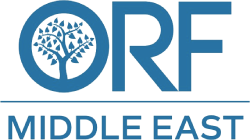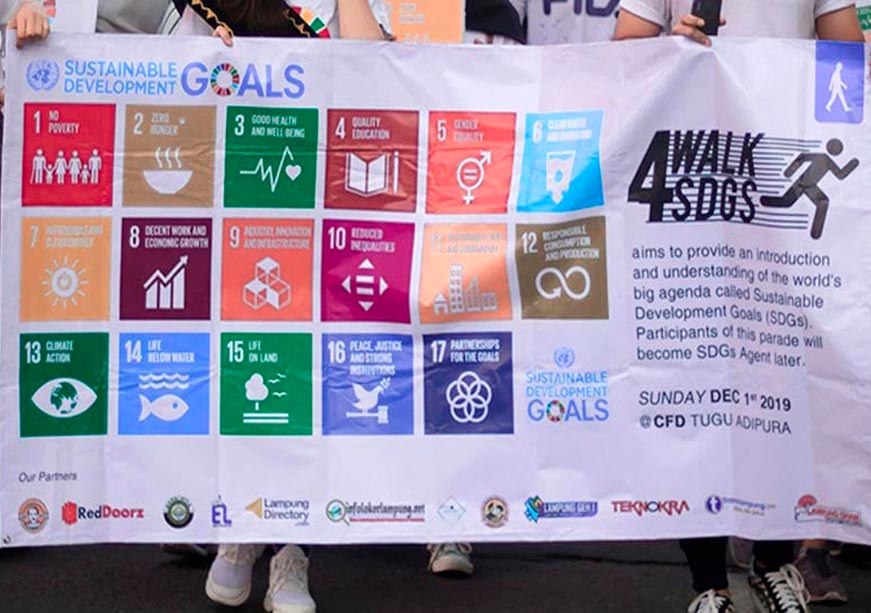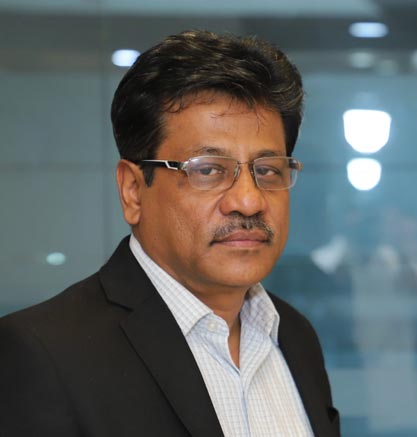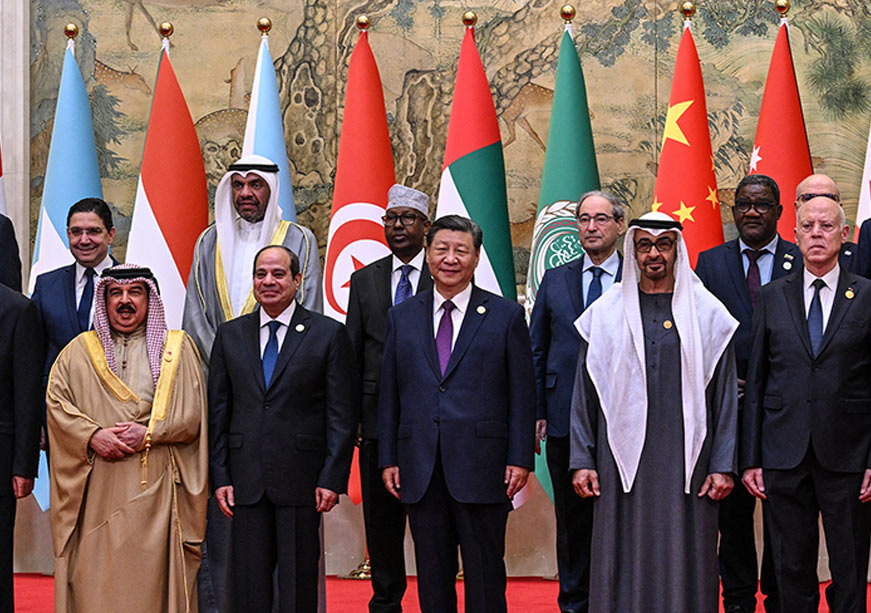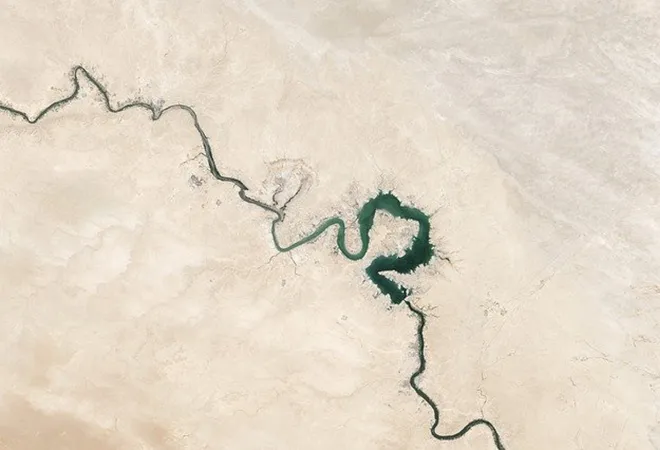The world is off-track in achieving the 2030 Sustainable Development Goals (SDGs), with financing gaps widening due to geopolitical shifts, rising debt, and the growing impacts of climate change. This brief offers a renewed framework to bridge the SDG financing gaps by strengthening domestic public finance, mobilising sector investments, and reforming the international financial architecture. It highlights the critical need for tax reforms, strategic use of public finance, and the deployment of tools such as blended finance, guarantees, and risk-sharing mechanisms to unlock private capital. The brief argues for structural changes in multilateral development banks and the international financial system to unlock affordable, long-term finance. It also explores innovative approaches, including leveraging insurance and pension funds, creating dedicated green public financial institutions, and aligning private capital flows.
Attribution: Dhruba Purkayastha and Kavita Vij, “Bridging the Financing Gap for the SDGs: A Framework for Renewed Action,” ORF Issue Brief No. 821, Observer Research Foundation, August 2025.
Introduction
Since the adoption in 2015 of the 17 Sustainable Development Goals (SDGs) and their associated targets, progress has fallen short of the trajectory required. The world is “leaving more than half the world behind,”[a],[1] with 48 percent of the 138 SDG targets (among a total of 169) being moderately or severely off-track. And over 30 percent have either seen no movement or even regressed below the 2015 baseline.
Compounding the challenges is the changing global order. Growing inequalities between and within countries, exacerbated by the COVID-19 pandemic, are fuelling ethnonationalism and protectionism. Recent geopolitical developments in the United States (US) have led the world’s largest economy to withdraw from the 2030 Agenda for Sustainable Development through an announcement at the UN General Assembly effectively denouncing it.[2] Additionally, the US has also withdrawn from the UNFCCC (United Nations Framework Convention on Climate Change), the Paris Agreement, the Loss and Damage Fund, and the World Health Organization (WHO), effectively closing any financial and technical contribution from the government to the global SDGs agenda.
While the US’s withdrawal from the Paris Agreement and its broader disengagement from the SDGs agenda by 2030 may influence Multilateral Development Banks (MDBs)—including the World Bank Group and regional banks like the Asian Development Bank, where it is the largest shareholder—these institutions appear to remain committed to financing global development goals, at least at the time of writing. There is a need to catalyse change in global governance and order, particularly among the MDBs. In September 2024, the heads of major MDBs presented their reform plans to the United Nations (UN) leadership, outlining steps to become a better, bigger, and more effective system. The UN Secretary-General emphasised that these MDB reforms are vital to unlocking greater volumes of affordable, long-term financing to bridge the SDGs funding gap, as per the Joint UN and MDB statement in September 2024.[3]
A key constraint to meeting the SDGs is the lack of development financing. The Third International Conference on Financing for Development (FFD), held in Addis Ababa from 13–16 July 2015, provided a new global framework for financing sustainable development policies and financial flows to economic, social, and environmental priorities under the provisions of the Addis Ababa Action Agenda.[4] A decade later, the UN Inter-Agency Task Force Report on Financing for Sustainable Development stated that SDG funding is at a crossroads.[5] This deficit is at the core of the sustainable development crisis, with developing countries requiring additional annual investments of US$4 trillion to meet their targets. The crisis has been compounded by international conflicts, supply chain disruptions, escalating climate-related disasters, fading multilateralism, and increasing trade barriers.
There is a compelling need to increase finance flows in developing countries, drawing from both domestic and international public and private finance sources. However, most developing countries have high fiscal deficits and unsustainable public debt, which were exacerbated during the pandemic. They also face inflationary pressures, which have, in turn, eroded their fiscal headroom to invest in SDG implementation and social safety nets. Increasing climate vulnerability and the growing need for public expenditure on climate adaptation and disaster management further constrain fiscal space. These challenges are often accompanied by progressively lower sovereign credit ratings, leading to a vicious cycle of a climate fiscal trap in many low-income developing countries. For many countries, interest payments on this account exceed spending on health and education, and crowd out public investment.
The path forward requires interventions at various levels: from increasing domestic public finance, optimising public expenditure towards SDG priorities, leveraging public finance to enable private investment, and reforming the international financial architecture to create a bigger and better global impact on the SDGs.
With the changing global governance, shifting power equations, and the possible emergence of a new paradigm of a multipolar or regional world order, the Fourth International Conference on Financing for Development (FfD4) held in Seville, Spain in June 2025 provided a unique opportunity to reform financing at all levels, including the international financial architecture. Although attendance was not as high as hoped, the summit underscored that without a rigorous governance overhaul, anchored in transparency, accountability and robust oversight, headline commitments made by countries will fail to translate into real-world impact.[6]
This brief outlines critical approaches to increasing finance for development in developing countries—both from domestic and international sources and encompassing public and private finance. It outlines recommendations for reforming the international financial architecture.
A Framework for Renewed Action on SDGs Financing
Achieving the Sustainable Development Goals by 2030 requires a fundamental shift in how resources are mobilised and allocated globally. With widening financing gaps, geopolitical tensions, and rising climate risks, there is an urgent need for a comprehensive approach that addresses both the scale and quality of investment. This calls for coordinated action across national budgets, private sector capital, and international financial systems to ensure that resources flow where they are most needed and with greater impact. The following framework outlines three priority areas for advancing a renewed global financing effort:
- Boosting Domestic Public Finance: Increasing public resources and improving the quality of public expenditure and private finance for the SDGs.
- Private Finance: Increasing contributions from private businesses and financial institutions towards meeting the SDG targets.
- International Development Finance: Reforming the International Financial Architecture, including Multilateral Development Banks (MDBs) for sustainable development.
Each of these are discussed in turn in the following paragraphs.
Boosting Domestic Public Finance
Most developing countries, particularly LDCs (Least Developed Countries), face increasing imbalances in public finances due to high structural deficits and unsustainable public debt. Their fiscal deficits and public debt are rising again after a period of contraction in public spending and debt levels following exceptional surges during the pandemic years.7 Coupled with increasing inflationary pressures and increasing geopolitical tensions, developing countries are unlikely to find adequate fiscal space to invest in meeting the SDGs and increase their social protection payments. Interest payments are increasing and crowding out much-needed public investment for sustainable development.8 In many countries, interest payments are exceeding development expenditure on essential services, like primary health and education. Tax-to-GDP revenues for developing countries have stagnated at ~15 percent, and for LDCs, at 10-12 percent, calling for systematic reforms.
To increase public revenues from domestic sources, both in absolute terms and relative to GDP, developing countries need to implement comprehensive tax reforms. These include cross-cutting reforms in taxation, such as value-added taxation, international agreements for fair tax sharing from e-commerce, transnational companies, and Global Value Chains (GVCs) with minimal market distortion. The digitisation of tax administration would boost public finance in developing countries. It may be useful to consider a small ad valorem tax on global wealth and a speculative financial transactions tax, along with exploring land and asset monetisation avenues. Developing countries need to align public expenditures with outcomes directed to SDG indicators—prioritising investments in public health, primary education, water and sanitation, air pollution reduction, and increasing investment allocation to social protection programmes. There are two high-level aspects to mobilising and directing domestic resources towards achieving the SDGs:
- Increasing public resources, such as domestic tax and non-tax revenues, both the tax base and rate, and focusing on non-tax revenue.
- Improving the quality (and composition) of public expenditure at federal and sub-sovereign levels.
Wide-ranging taxation reforms across developing countries could help increase public resource revenues from domestic sources in both absolute and relative-to-GDP terms. Tax reforms could, inter alia, include:
- Goods and Services Tax: Implementing Value-Added Indirect Taxation as Goods and Services Tax in developing countries, including Least Developed Countries (LDCs), with technical support from multilateral institutions to ensure efficient design and implementation.
- International Agreement on Fair Tax-Sharing: Establish frameworks for equitable taxation of e-commerce, transnational companies, and Global Value Chains (GVCs). While developing countries hold value addition in GVCs, consumption-based taxation systems often prevent them from receiving a fair share of tax revenue.
- Wealth/High-Value Transaction Tax: Address growing inequality through modest taxes on wealth or high-value transactions. This approach can complement traditional income taxation, which suffers from limited effectiveness in many developing countries due to administrative challenges, leading to widespread tax evasion and leakage. Most developing countries tax formal income as a direct tax, and there is tax leakage due to poor administration and rampant tax evasion.
- Land and Asset Monetisation: Leverage public land and asset monetisation initiatives to finance infrastructure investments through ‘Land-Based Infrastructure Financing’ mechanisms, which capture the increased value of land from new infrastructure to generate funds. For example, The Delhi Metro Rail Corporation (DMRC) in India used land parcels around metro stations for commercial development. This approach can be integrated into MDB interventions to develop climate-resilient infrastructure while generating revenue.
- Manage Climate Action Expenditure: While SDGs 7 and 13 remain time-sensitive and critical towards meeting global climate goals in line with the Paris Agreement, developing countries must focus selectively on climate mitigation towards meeting NDCs, and enhance focus on adaptation and resilience to address the local adverse effects of climate change.
- Adopt a Sustainable Budgeting Taxonomy: Instead of adopting a Green Taxonomy and Green Budgeting as popularly advocated, it may be useful to consider SDG-aligned budgeting for Public Financial Management, with outcome indicators derived from SDG indicators (Sustainable Budgeting instead of Green Budgeting). The process will require countries to balance selective climate mitigation efforts with enhanced adaptation and resilience measures.
- Leverage Public Finance: Facilitate the strategic use of public finance to leverage capital mobilisation from domestic private sources through risk sharing and guarantees and increase Gross Fixed Capital Formation through Public-Private Partnerships. Increased contingent liabilities on the public exchequer need to be well-managed for better risk allocation between public and private finance to extend the impact of limited public resources.
Exploring Private Sector Financing for SDGs
For decades, governments have prioritised industrial competitiveness and economic growth. While this has lifted billions of people out of poverty, it has led to the unsustainable depletion of natural resources—a pattern that remains inextricably linked to economic growth and development. Therefore, delinking economic activity from resource depletion is now crucial. The scale of investment required to meet SDG targets exceeds the public financing capabilities of governments, necessitating private-sector development approaches that go beyond the conventional improvements in a business-enabling environment. This must also recognise that meeting many SDGs represents natural monopolies or classic market failures requiring both state intervention and regulatory action to reshape markets. Multiple mechanisms, such as policy incentives, public-private partnerships for climate-resilient infrastructure, and increasing development outcomes through risk-sharing arrangements and government guarantees, would be required to maintain this balance.
Domestic public finance resources, while important, need to be complemented by private finance, both domestic and international. However, private investment in the SDGs has underperformed. According to the Financing for Sustainable Development Report 2024, “Private sector development, a key driver of sustainable growth and development, has stalled in recent years.”[7] The Addis Agenda’s vision of private sector investment and innovation being an instrument to meet SDGs, since private business activity is considered an engine of inclusive growth and job creation, has fallen short of expectations.
It is important to reduce the misplaced onus on private business and finance to meet SDGs and create jobs without easing the binding constraints of government and market failures[8]. The Addis Agenda expectations from the private sector were inflated, and the international development agenda did not focus on interventions that could have led to higher private sector contributions. Instead, most development interventions focused only on a broad business-enabling environment, such as the World Bank’s Doing Business[9] and investment climate reforms. Subsequently, the Paris Agreement further burdened private businesses and finances with investments for climate goals. Developing countries have moved away from industrial policy on heeding advice from MDBs. Today, the need for industrial policy is felt in the overarching market failures to counter the global effects of climate change arising from unabated greenhouse gas (GHG) emissions.
While the broader enabling environment for business has improved in many developing countries, private businesses have failed to deliver on the SDGs. Meeting these targets requires a massive investment of up to US$4.5 trillion per annum till 2030. Private sector development approaches need to go beyond Doing Business and Investment Climate and recognise that meeting many key SDGs naturally causes monopolies or classic market failures. Thus, this calls for state intervention and regulatory action to shift markets towards SDGs through policy rents. The following private sector development and financing approaches could be considered:
- Public-Private Partnerships (Private Provision of Public Services): Return to Public-Private Partnerships as development models for SDGs to increase private sector provisioning for public services. The entire range of PPPs, from Design Build Operate (DBO) to Design Build Finance and Operate (DBFO) for many SDGs, such as primary health, education, water and sanitation, and access to electricity, need to be aligned with the Universal Service Obligations (USO) of governments.
- Industrial Policy (Greening Private Sector Development): Private business and finance must be directed, via greening private sector development interventions, primarily through Green Industrial Policy for hard-to-abate industrial sectors, to make the production function of the economy account for the marginal social cost of production. While this may, in the near term, reduce aggregate demand in the economy, over the medium term, it will enable the shift towards green manufacturing, creating new jobs and pathways out of poverty. According to the Green Industrial Policy,[10] “Greening the economy is a goal which will require enormous investment. As markets are currently failing to provide the required incentives for environmental sustainability, governments must intervene and provide ‘policy rents’ for investments in sustainability while withdrawing rents from polluting investments.”
- Financial Inclusion for SME Business (Improving Access to Finance): Nearly all financial inclusion initiatives in developing countries have focused on retail financial inclusion and banking the unbanked. This has yielded gains in financial inclusion; however, progress has slowed over the last few years. While financial inclusion has helped improve distributional equity, access to credit for small and medium enterprises (SMEs) has remained a constraint to job-creating private investments, especially in LDCs. The lack of supportive financial regulation has also limited the expansion of Alternative Credit Systems, such as Person-to-Person (P2P) lending. This is despite technology reducing information asymmetry between businesses and the banking system. Capital markets have remained narrow, shallow, and underdeveloped in LDCs, with no contribution towards improving access to finance for private sector development. International development work needs to focus on improving payment systems and credit infrastructure, and developing institutions for secured lending, such as collateral registries and credit bureaus.
- Aligning Sustainable and Green Finance: The last decade since the Addis Agenda and the Paris Agreement has seen the alignment of sustainable and responsible green investment finance standards and codes[b] with the SDGs. This fragmented format of standards and codes has not been conducive to direct private finance towards sustainable development.[11] Moreover, these standards were voluntary and often driven by institutional compacts between banks, asset management companies, and insurance agencies, which did not achieve their purported objectives. As of 2022, these standards and codes have converged into the International Financial Reporting Standards (IFRS) and the International Sustainability Standards Board (ISSB),[12] which are wider in scope than climate finance. Standardising and subsequently harmonising finance standards will be key to their universal application.
- Improving Central Banking and Financial Regulation: The Network for Greening Financial System (NGFS) started operations in 2018; since then, the central banks of 140 countries have become part of it. While mitigating climate-related financial risks remains key to global financial stability, it is also imperative that the regulatory mechanism shifts the intermediation for domestic finance towards the SDGs through various instruments. Banking regulations in most developing countries use the Basel three-pillar approach of a) disclosure, b) oversight, and c) capital. Most developing countries have underdeveloped financial markets, necessitating a shift in intermediation through directed lending and interest subvention. The IMF Article IV Assessment and the joint Financial Sector Assessment Program of the World Bank need to be modified to account for new realities of climate and sustainability. A new framework is also needed to define financial stability in developing countries.
Reforming the International Financial Architecture
The global development landscape is undergoing a period of disruption marked by growing fiscal pressures, geopolitical shifts, and deepening inequalities. At the heart of this challenge lies the urgent need to enhance and redirect development financing, particularly for countries in the Global South. MDBs and the broader International Financial Architecture (IFA) play a pivotal role in bridging the financing gap required to achieve the SDGs. However, existing structures and mechanisms have proven to be inadequate in scale, reach, and responsiveness. Reforming these institutions—enhancing the effectiveness of Official Development Assistance (ODA), leveraging private finance, and realigning global governance systems—has become a key priority. The following section outlines critical dimensions of these reform efforts and opportunities to mobilise impactful and equitable finance for sustainable development:
a) Enhancing the effectiveness of ODA.
While ODA has progressively increased since the 2022 FFD Monterrey, reaching a peak of US$210 billion in 2022, it has started declining from 2024. Even at the highest levels, ODA has fallen short of the UN-defined target of 0.7 percent of the Gross National Income (GNI) of Annex 1 countries. The Addis Agenda recognised the key role of international public finance by directing ODA towards key SDGs in developing countries and LDCs. It also underscored the need to mobilise other public and private finance to meet them. An important indicator was added to SDG17 in 2022 on additional financial resources mobilised by using ODA, including a set of cascading sustainable development criteria to only count flows aligned with the SDGs.
Therefore, the key question is how ODA from developed countries can be increased and or made effective in the present geopolitical situation where large and richer OECD countries are withdrawing from them and development aid/contributions from Europe are faced with reduced budget allocations. The global governance order (the UN and MDBs) must engage with developed countries both directly and through mobilisation to work towards meeting the commitments made thus far—which is using ODA to leverage commercial finance. To address ODA constraints, the UN has defined six sub-indicators for data: a) official sustainable development grants; b) official concessional sustainable development loans; c) official non-concessional sustainable development loans; d) Foreign Direct Investment; e) mobilised private finance on an experimental basis; and f) private grants.
Given that FSDR 2024 underscores the lack of adequate international financing flows towards meeting SDGs, it is important that the overall ODA, including MDB financing, be directed and leveraged to achieve SDGs. To effectively channel ODA, including MDB financing, there is a need to expand lending by enhancing their capital bases, using callable capital optimally, increasing private capital mobilisation, and reducing the cost of finance for developing countries.
b) Mobilising international private finance by leveraging ODA.
The UNDP’s private finance initiative for SDGs[13] provides the approach of (a) leveraging private finance, (b) aligning capital, and (c) strengthening policy and institutions. Attempts have been made in international development to focus private finance on sustainable development, with the primary instrument being the mobilisation of commercial/private finance via ODA. While this has increased the mobilisation of private finance to US$150 billion over the last five years, it remains a fraction of what is required for the world to meet SDGs, as per the OECD report on SDG Finance Mobilisation.[14] Meeting SDGs requires a shift in the way overall ODA works to move private capital mobilisation from ‘ex-post’ ODA interventions in developing countries, to ‘ex-ante’ mobilisation to minimise the distortionary cost of sovereign and forex risks. This approach requires catalytic investment, investment banking through development finance, and risk mitigation through contingent guarantees derived from developed countries.
c) Increasing the SDG impact of ODA by directing it to SDGs.
ODA comprises bilateral and multilateral aid counted as grant equivalent; it increased to about US$220 billion in 2022 (US$150 billion in bilateral and US$70 billion in multilateral). Given the various conflicts and informal migration worldwide, a substantial share of ODA has been directed to humanitarian aid and refugee management. At the same time, there is a need to focus ODA on social sector SDGs through public finance transfers to developing countries. The fragmentation of bilateral ODA through common regional platforms should be reduced, and in its place, bilateral aid assistance should be instituted, and private philanthropy integrated into ODA where transfers are made to leverage private capital. In terms of innovative financial instruments, the ODA could provide risk mitigation and credit enhancement for LDC sovereign borrowings and provide forex hedging through contributions to TCX or similar structures.[15]
D) Restructuring the International Financial Architecture.
The last round of US$650 billion allocations for IMF Special Drawing Rights (SDRs) occurred during the COVID-19 pandemic in 2021-22 where a disproportionate share was allocated to developed countries and large G20 developing economies. While the G20 agreed to re-channel US$100 billion of the SDRs to developing countries, leading to the establishment of the IMF’s Resilience and Sustainability Trust (RST) and Poverty Reduction and Growth Trust (PRGT), the impact has been limited. Similar mechanisms for rechannelling ‘excess’ SDRs directed to specific SDGs and developing countries could advance targets such as Energy Transition and Primary Healthcare. Beyond scaling up RST and PRGT, more such mechanisms are required to allow for zero-interest and concessional financing to LDCs as currently provided by PRGT.
High-level restructuring of the International Financial Architecture comprises governance reforms, sovereign debt management, and increased finance for sustainable development with a focus on climate action.[16] Governance reforms are necessary to enhance the global legitimacy of International Financial Institutions (IFIs), starting from the IMF Quota Alignment, which does not reflect today’s economic reality. The IMF quota realignment would strengthen the voice of the Global South countries, aiding in the redistribution of voting rights at the World Bank. However, achieving consensus on the reallocation of IMF quotas and changing the overarching governance of IFIs is politically challenging. Therefore, these inputs are limited to increasing finance for sustainable development, including climate action, with a focus on the role of the IMF.
e) Reforming Multilateral Development Banks
Many notable MDB reform initiatives have been undertaken through various initiatives and forums over the last three years.
- Boosting MDB Capacity:[17] An independent review of MDB Capital Adequacy Frameworks, 2022 – G20 and COP
- Climate Finance Framework:[18] An independent high-level expert group on climate finance – COP
- The Triple Agenda:[19] Strengthening Multilateral Development Banks
These reports and initiatives primarily focus on climate action but have wider implications for overall SDGs, as the suggested reforms would impact MDB operations at scale. In addition to the estimation of global climate investment to meet the requisite goals, the focus of the aforementioned committee reports are directed towards: (a) increasing MDB lending capacity, also with the use of ‘Callable Capital’; (b) increasing the role of MDBs in mobilising private and commercial capital, which is derisking and crowding in private finance; and c) creating a third institutional mechanism for overarching risk mitigation through the increased use of guarantees from MDBs which have been concentrated in the Multilateral Investment Guarantee Agency (MIGA) thus far.
It would be useful to include new-generation MDBs and regional development banks in these reforms, specifically AIIB, ADB for Asia, and NDB for BRICS-Plus countries. The current loan portfolios of AIIB and NDB are lower than those of IBRD and ADB, but both institutions have a total capital of about US$100 billion, which can be leveraged many times over to increase the scale of overall MDB lending equivalent to that of existing MDBs. Integrating these newer MDBs in the overall reform agenda would be useful in addressing financing gaps in the SDGs. While these three initiatives have been crystallised into reports providing the overarching blueprints and analytical work for MDB reforms, translating them into institutional action remains crucial.
The Economic Imperative of Green and Sustainable Growth
Meeting the SDGs also presents economic opportunities for greening economic growth in developing countries. The UN estimates that achieving the SDGs could generate 380 million new jobs and unlock US$12 trillion in market opportunities by 2030. These are concentrated in four economic systems: food and agriculture, cities, energy and materials, and health and well-being—sectors that collectively comprise 60 percent of the global real economy.
To realise this potential, a paradigm shift from shareholder capitalism to a stakeholder-driven market economy is essential. This transformation requires bringing the private sector to the forefront of sustainable development efforts through innovative partnerships, aligned incentives, and integrated reporting frameworks that measure both financial and social returns. By recalibrating corporate objectives to balance profit motives with environmental stewardship and social progress, businesses can evolve from passive observers to active architects of sustainable solutions. This shift is not merely idealistic—it represents a strategic imperative for businesses to capture emerging market opportunities, mitigate risks, and secure long-term viability in a resource-constrained world increasingly defined by transparency and accountability to multiple stakeholders.
Even amidst the current geopolitical situation and emerging world order, the 2030 Development Agenda can still create progress for the six billion people in the developing world with alternative governance and institutional approaches.
India has pioneered alternative governance models through initiatives like the International Solar Alliance (ISA), Coalition for Disaster Resilient Infrastructure (CDRI), and Global Biofuel Alliance (GBA) and can lead the Global South. These efforts, coupled with green and blue economy diplomacy, offer fresh pathways for sustainable development. Strengthened international and regional cooperation via regional development banks, multipolar trade and development groupings, and bilateral agreements can complement global financial reforms championed through platforms like the G20, BRICS, QUAD, COP, and other forums, and FfD. The Seville Commitment[20] from FfD4 underscores the urgency of mobilising US$4 trillion annually to achieve the SDGs. With its leadership in BRICS-Plus, India has shown how innovative governance and financing models can work for emerging economies. Moving forward, BRICS-Plus can drive reforms to harmonise trade rules, boost cross-border infrastructure, promote green investments, and strengthen local currency mechanisms to reduce dependence on existing international financial architectures.
Ultimately, achieving the SDGs by 2030 will depend on bold policy and institutional reforms to unlock sustainability-aligned capital, and redesign international financial systems for sustainability and inclusivity. The aim is equity and ensuring that no one is left behind in the global transition.
Endnotes
[a] “Leave No One Behind” is a fundamental principle of the 2030 Development Agenda.
[b] These include disclosures to ESG (Environment Social Governance) and impact investments.
[1] “SDG Indicators,” https://unstats.un.org/sdgs/report/2023.
[2] Sustainable Development Goals, United Nations, https://www.un.org/sustainabledevelopment/blog/2024/09/press-release-un-secretary-general-and-heads-of-multilateral-development-banks-to-enhance-collaboration-to-address-the-challenges-of-achieving-the-sdgs/
[3] IMF, Fiscal Monitor, April 2025, Washington DC, International Monetary Fund, 2025, https://www.imf.org/en/Publications/FM; DESA and FSDO, Financing for Sustainable Development Report 2024, April 2024, Washington DC, Department of Economic and Social Affairs, 2024, https://desapublications.un.org/publications/financing-sustainable-development-report-2024
[4] Sustainable Development Goals, Addis Ababa Action Agenda, 2015, https://sustainabledevelopment.un.org/index.php?page=view&type=400&nr=2051&menu=35.
[5] “Financing for Sustainable Development Report 2024”
[6] “4th International Conference on Financing for Development,” https://financing.desa.un.org/ffd4.
[7] Department of Economic and Social Affairs, United Nations, Financing for Sustainable Development Report 2024, April 2024, https://desapublications.un.org/publications/financing-sustainable-development-report-2024
[8] Richardo Hausmann, Dani Rodrik, Andres Velasco, Growth Diagnostics, March 2005, https://drodrik.scholar.harvard.edu/sites/scholar.harvard.edu/files/dani-rodrik/files/growth-diagnostics.pdf
[9] World Bank, “Doing Business 2004-2020,” https://archive.doingbusiness.org/en/doingbusiness
[10] UNEP, “Green Industrial Policy,” UN Environment Programme, https://www.unep.org/explore-topics/green-economy/what-we-do/economic-and-trade-policy/green-industrial-policy
[11] OECD, “Leveraging Private Finance for Development,” https://www.oecd.org/en/topics/sub-issues/leveraging-private-finance-for-development.html
[12] IFRS Foundation, “About the International Sustainability Standards Board,” https://www.ifrs.org/groups/international-sustainability-standards-board
[13] UNDP, “Private Finance for the SDGs,” https://sdgprivatefinance.undp.org
[14] OECD, “Official Development Assistance,” Organisation for Economic Co-operation and Development, https://www.oecd.org/en/topics/policy-issues/official-development-assistance-oda.html
[15] TCXFund, “About the Fund: Who We Are,” 2021, https://www.tcxfund.com/about-the-fund/.
[16] MDB Reform Accelerator, “The Reform of the Global Financial Architecture: Toward a System That Delivers for the South,” April 25, 2024, https://mdbreformaccelerator.cgdev.org/the-reform-of-the-global-financial-architecture-toward-a-system-that-delivers-for-the-south/#:~:text=This%20report%20issues%20specific%20and,infrastructure%20and%20trade%20routes%2C%20and.
[17] Ministero dell’Economia e delle Finanze, “Boosting MDBs’ Investing Capacity: An Independent Review of Multilateral Development Banks’ Capital Adequacy Frameworks,” https://www.dt.mef.gov.it/export/sites/sitodt/modules/documenti_it/news/news/CAF-Review-Report.pdf
[18] Amar Bhattacharya et al., A Climate Finance Framework: Decisive Action to Deliver on the Paris Agreement. Summary, November 2023, Grantham Research Institute on Climate Change and the Environment, London School of Economics and Political Science, 2023, https://www.lse.ac.uk/granthaminstitute/wp-content/uploads/2023/11/A-Climate-Finance-Framework-IHLEG-Report-2-SUMMARY.pdf.
[19] G20, The Triple Agenda Report, https://www.g20.in/content/dam/gtwenty/gtwenty_new/document/Cover%20with%20Inside%20page%204%20oct.pdf
[20] Sustainable Development Goals, United Nations, https://www.un.org/sustainabledevelopment/blog/2025/07/ffd4-closing-press-release/.
